1.
Preliminaries
A function f is said to be completely monotonic on an interval I if f has derivatives of all orders on I and 0≤(−1)k−1f(k−1)(x)<∞ for x∈I and k∈N, where f(0)(x) means f(x) and N is the set of all positive integers. See [1,2,3]. Theorem 12b in [3] states that a necessary and sufficient condition for a function f to be completely monotonic on the infinite interval (0,∞) is that the integral f(t)=∫∞0e−tsdτ(s) converges for s∈(0,∞), where τ(s) is nondecreasing on (0,∞). In other words, a function is completely monotonic on (0,∞) if and only if it is a Laplace transform of a nonnegative measure. This is one of many reasons why many mathematicians have been investigating completely monotonic functions for many decades.
Definition 1.1 ([4,5,6,7,8,9]). Let f(x) be a completely monotonic function on (0,∞) and denote f(∞)=limx→∞f(x). If for some r∈R the function xr[f(x)−f(∞)] is completely monotonic on (0,∞) but xr+ε[f(x)−f(∞)] is not for any positive number ε>0, then we say that the number r is completely monotonic degree of f(x) with respect to x∈(0,∞); if for all r∈R each and every xr[f(x)−f(∞)] is completely monotonic on (0,∞), then we say that completely monotonic degree of f(x) with respect to x∈(0,∞) is ∞.
The notation degdegxcm[f(x)] has been designed in [4] to denote completely monotonic degree r of f(x) with respect to x∈(0,∞). It is clear that completely monotonic degree degdegxcm[f(x)] of any completely monotonic function f(x) with respect to x∈(0,∞) is at leat 0. It was proved in [6] that completely monotonic degree degdegxcm[f(x)] equals ∞ if and only if f(x) is nonnegative and identically constant. This definition slightly modifies the corresponding one stated in [4] and related references therein. For simplicity, in what follows, we sometimes just say that degdegxcm[f(x)] is completely monotonic degree of f(x).
Why do we compute completely monotonic degrees? One can find simple but significant reasons in the second paragraph of [7] or in the papers [10,11,12,13] and closely related references therein. Completely monotonic degree is a new notion introduced in very recent years. See [4,6,9,11,12,14,15,16,17,18,19,20,21,22] and closely related references. This new notion can be used to more accurately measure and differentiate complete monotonicity. For example, the functions 1xα and 1xβ for α,β>0 and α≠β are both completely monotonic on (0,∞), but they are different completely monotonic functions. How to quantitatively measure their differences? How to quantitatively differentiate them from each other? The notion of completely monotonic degrees can be put to good use: The completely monotonic degrees of 1xα and 1xβ with respect to x∈(0,∞) for α,β>0 and α≠β are α and β respectively.
The classical Euler's gamma function Γ(x) can be defined for x>0 by Γ(x)=∫∞0tx−1e−tdt. The logarithmic derivative of Γ(x), denoted by ψ(x)=Γ′(x)Γ(x), is called the psi or digamma function, the derivatives ψ′(x) and ψ″(x) are respectively called the tri- and tetragamma functions. As a whole, the derivatives ψ(k)(x) for k≥0 are called polygamma functions. For new results on Γ(z) and ψ(k)(x) in recent years, please refer to [7,11,23,24,25,26,27,28,29] and closely related references therein.
Why do we still study the gamma and polygamma functions Γ(z) and ψ(k)(z) for k≥0 nowadays? Because this kind of functions are not elementary and are the most applicable functions in almost all aspects of mathematics and mathematical sciences.
2.
Backgrounds and motivations
Let
In [30], it was established that the inequality
holds for x>0, where
It is clear that the inequality
for x>0 is a weakened version of the inequality (2.2). This inequality was deduced and recovered in [31,32]. The inequality (2.3) was also employed in [31,32,33,34]. This inequality has been generalized in [33,35,36,37]. For more information about the history and background of this topic, please refer to the expository and survey articles [11,38,39,40,41] and plenty of references therein.
In the paper [42], it was proved that, among all functions [ψ(m)(x)]2+ψ(n)(x) for m,n∈N, only the function Ψ(x) is nontrivially completely monotonic on (0,∞).
In [43,44], the functions
were proved to be completely monotonic on (0,∞). From this, we obtain
for x>0. In [45], the function
was proved to be completely monotonic on (0,∞) if and only if λ≤0, and so is −hλ(x) if and only if λ≥4; Consequently, the double inequality
holds on (0,∞) if and only if μ≤0 and ν≥4. The inequality (2.6) refines and sharpens the right-hand side inequality in (2.4).
It was remarked in [40] that a divided difference version of the inequality (2.3) has been implicitly obtained in [46]. The divided difference form of the function Ψ(x) and related functions have been investigated in the papers [47,48,49,50,51] and closely related references therein. There is a much complete list of references in [52].
In [14,16], among other things, it was deduced that the functions x2Ψ(x) and x3Ψ(x) are completely monotonic on (0,∞). Equivalently,
Motivated by these results, we naturally pose the following two questions:
1. is the function x4Ψ(x) completely monotonic on (0,∞)?
2. is α≤4 the necessary and sufficient condition for the function xαΨ(x) to be completely monotonic on (0,∞)?
In other words, is the constant 4 completely monotonic degree of Ψ(x) with respect to x∈(0,∞)?
3.
Five lemmas
In order to affirmatively and smoothly answer the above questions, we need five lemmas below.
Lemma 3.1 ([29]). For n∈N and x>0,
Lemma 3.2 ([3,29]). Let fi(t) for i=1,2 be piecewise continuous in arbitrary finite intervals included in (0,∞) and suppose that there exist some constants Mi>0 and ci≥0 such that |fi(t)|≤Miecit for i=1,2. Then
Lemma 3.3 ([53]). Let f(x,t) is differentiable in t and continuous for (x,t)∈R2. Then
Lemma 3.4 ([54,55,56]). If fi for 1≤i≤n are nonnegative Lebesgue square integrable functions on [0,a) for all a>0, then
for all n≥2 and x≥0, where fi∗fj(x) denotes the convolution ∫x0fi(t)fj(x−t)dt.
Lemma 3.5 ([29]). As z→∞ in |argz|<π,
The formulas listed in Lemma 3.5 are special cases of [29].
4.
Completely monotonic degree of Ψ(x) with respect to x∈(0,∞) is 4
Now we are in a position to compute completely monotonic degree of the function Ψ(x).
Theorem 4.1. Completely monotonic degree of Ψ(x) defined by (2.1) with respect to x∈(0,∞) is 4. In other words,
Proof. Using the integral representation (3.1) and the formula (3.2) gives
where
Direct calculations reveal
and
Further differentiating consecutively brings out
for s\in(0, \infty) , and
This means that
for s\in(0, \infty) . Therefore, the derivative [\ln\sigma''(s)]'' is negative, that is, the function \sigma''(s) is logarithmically concave, on (0, \infty) . Hence, for any given number t > 0 ,
1. the function \sigma''(s)\sigma''(t-s) is also logarithmically concave with respect to s\in(0, t) ;
2. the function \sigma''(s) is decreasing and \sigma(s) is not concave on (0, \infty) .
By Lemma 3.3 and integration-by-part, straightforward computations yield
and
Applying Lemma 3.4 to f_1 = f_2 = \sigma'' and n = 2 leads to
Hence, the validity of the inequality
implies the positivity of q^{(4)}(t) on (0, \infty) .
When t\sigma^{(4)}(t)+2\sigma^{(3)}(t)-\sigma''(t)\le0 , the inequality (4.3) is clearly valid.
When t\sigma^{(4)}(t)+2\sigma^{(3)}(t)-\sigma''(t) > 0 , the inequality (4.3) can be rearranged as
Let
Differentiating twice produces
and
where
and
Differentiating and taking the limit t\to0 about 76 times respectively by the same approach as either the proof of the positivity of \theta(t) in [43], or proofs of the absolute monotonicity of the functions f_1, f_2, f_3 and h_1, h_2, h_3, h_4 in [57], or the proof of the positivity of h_1(s) on page 3396 in this paper, we can verify the positivity of R(t) on (0, \infty) . In [58], a stronger conclusion than the positivity of R(t) on (0, \infty) was proved in details. This means that Q(t) > 0 on (0, \infty) and F''(t) > 0 . Accordingly, the derivative F'(t) is strictly increasing. Because
and
which are numerically calculated with the help of the software MATHEMATICA, the unique zero of F'(t) locates on the open interval (8, 10) . Consequently, the unique minimum of the function F(t) attains on the interval (8, 10) . Since
for t, t_0\in[8, 10] , where \xi locates between t_0 and t , numerically calculating with the help of the software MATHEMATICA gains
on the interval [8, 10] . In conclusion, the inequality (4.3) is valid and the fourth derivative q^{(4)}(t) is positive on (0, \infty) .
Integrating by parts successively results in
From the positivity of q^{(4)}(t) on (0, \infty) , it follows that the function x^4\Psi(x) is completely monotonic on (0, \infty) . In other words,
Suppose that the function
is completely monotonic on (0, \infty) . Then
on (0, \infty) , that is,
From Lemma 3.5, it follows
As a result, we have
Combining (4.4) with (4.5) yields (4.1). The proof of Theorem 4.1 is complete.
5.
Strongly completely monotonic functions and completely monotonic degree
Recall from [59] that a function f is said to be strongly completely monotonic on (0, \infty) if it has derivatives of all orders and (-1)^nx^{n+1}f^{(n)}(x) is nonnegative and decreasing on (0, \infty) for all n\ge0 .
Theorem 5.1 ([18]). A function f(x) is strongly completely monotonic on (0, \infty) if and only if the function xf(x) is completely monotonic on (0, \infty) .
This theorem implies that the set of completely monotonic functions whose completely monotonic degrees are not less than 1 with respect to x\in(0, \infty) coincides with the set of strongly completely monotonic functions on (0, \infty) .
Because not finding a proof for [18] anywhere, we now provide a proof for Theorem 5.1 as follows.
Proof of Theorem 5.1. If xf(x) is completely monotonic on (0, \infty) , then
on (0, \infty) for all integers k\ge0 . From this and by induction, we obtain
on (0, \infty) for all integers k\ge0 . So, the function f(x) is strongly completely monotonic on (0, \infty) .
Conversely, if f(x) is a strongly completely monotonic function on (0, \infty) , then
and
hold on (0, \infty) for all integers k\ge0 . Hence, it follows that xf(x)\ge0 and (-1)^{k+1}[xf(x)]^{(k+1)} on (0, \infty) for all integers k\ge0 . As a result, the function xf(x) is completely monotonic on (0, \infty) . The proof of Theorem 5.1 is complete.
6.
A property of logarithmically concave functions
Now we prove a property of logarithmically concave functions.
Theorem 6.1. If f(x) is differentiable and logarithmically concave \rm( or logarithmically convex, respectively \rm) on (-\infty,\infty) , then the product f(x)f(\lambda-x) for any fixed number \lambda\in\mathbb{R} is increasing \rm( or decreasing, respectively \rm) with respect to x\in\bigl(-\infty,\frac{\lambda}2\bigr) and decreasing \rm( or increasing, respectively \rm) with respect to x\in\bigl(\frac{\lambda}2,\infty\bigr) .
Proof. Taking the logarithm of f(x)f(\lambda-x) and differentiating give
In virtue of the logarithmic concavity of f(x) , it follows that the function \frac{f'(x)}{f(x)} is decreasing and \frac{f'(\lambda-x)}{f(\lambda-x)} is increasing on (-\infty, \infty) . From the obvious fact that \{\ln[f(x)f(\lambda-x)]\}'|_{x = \lambda/2} = 0 , it is deduced that \{\ln[f(x)f(\lambda-x)]\}' < 0 for x > \frac\lambda2 and \{\ln[f(x)f(\lambda-x)]\}' > 0 for x < \frac\lambda2 . Hence, the function f(x)f(\lambda-x) is decreasing for x > \frac\lambda2 and increasing for x < \frac\lambda2 .
For the case of f(x) being logarithmically convex, it can be proved similarly.
7.
Remarks and two open problems
In this section, we list several remarks on our main results and pose two open prblems.
Remark 7.1. The function \sigma(s) defined in (4.2) is a special case of the function
where a, b are positive numbers and a\ne b . Some special cases of the function g_{a, b}(s) and their reciprocals have been investigated and applied in many papers such as [6,8,60,61,62,63,64,65,66,67,68,69,70,71,72,73,74,75]. This subject was also surveyed in [76]. Recently, it was discovered that the derivatives of the function \frac{\sigma(s)}s = \frac1{1-e^{-s}} have something to do with the Stirling numbers of the first and second kinds in combinatorics and number theory. For detailed and more information, please refer to [77,78,79,80,81,82,83,84,85,86,87,88,89].
By Theorem 6.1, it can be deduced that the function \sigma''(s)\sigma''(t-s) is increasing with respect to s\in\bigl(0, \frac{t}2\bigr) and decreasing with respect to s\in\bigl(\frac{t}2, t\bigr) , where \sigma is defined in (4.2).
The techniques used in the proof of Theorem 6.1 was ever utilized in the papers [70,90,91,92] and closely related references therein.
Remark 7.2. The result obtained in Theorem 4.1 in this paper affirmatively answers those questions asked on page 3393 at the end of Section 2. Therefore, the result in Theorem 4.1 strengthens, improves, and sharpens those results in (2.7). This implies that other results established in [14,16] can also be further improved, developed, or amended.
Remark 7.3 (First open problem). Motivated by Lemma 3.4, the proof of Theorem 4.1, and Theorem 6.1, we pose the following open problem: when f_i for 1\le i\le n are all logarithmically concave on [0, a) for all a > 0 , can one find a stronger lower bound than the one in (3.3) for the convolution f_1\ast f_2\ast\dotsm\ast f_n(x) ?
Remark 7.4 (Second open problem). We conjecture that the completely monotonic degrees with respect to x\in(0, \infty) of the functions h_\lambda(x) and -h_\mu(x) defined by (2.5) are 4 if and only if \lambda\le0 and \mu\ge4 . In other words,
if and only if \lambda\le0 and \mu\ge4 .
Remark 7.5. This paper is a revised and shortened version of the preprint [93].
8.
Conclusions
In ths paper, the author proved that the completely monotonic degree of the function [\psi'(x)]^2+\psi''(x) with respect to x\in(0, \infty) is 4 , verified that the set of all strongly completely monotonic functions on (0, \infty) coincides with the set of functions whose completely monotonic degrees are greater than or equal to 1 on (0, \infty) , presented a property of logarithmically concave functions, and posed two open problems on a stronger lower bound of the convolution of finite many functions and on completely monotonic degree of a kind of completely monotonic functions on (0, \infty) .
Acknowledgments
The author thanks anonymous referees for their careful corrections to, helpful suggestions to, and valuable comments on the original version of this manuscript.
Conflict of interest
The author declares that he have no conflict of interest.











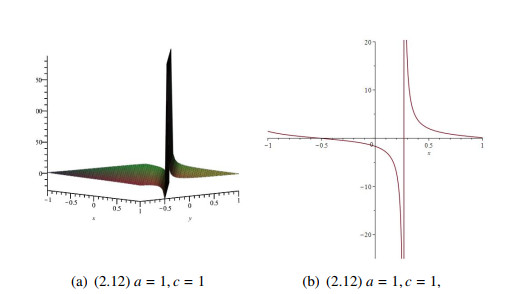
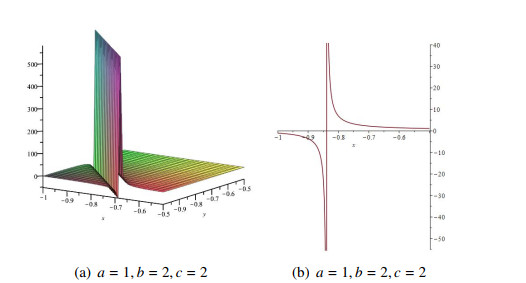
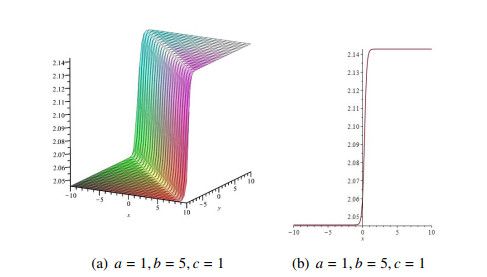
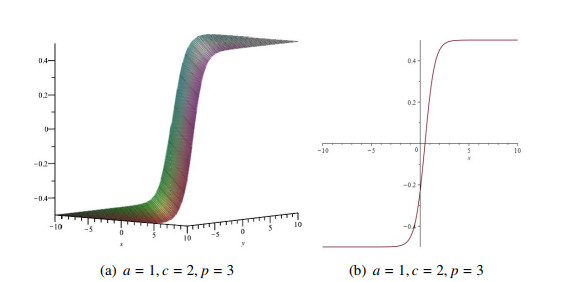

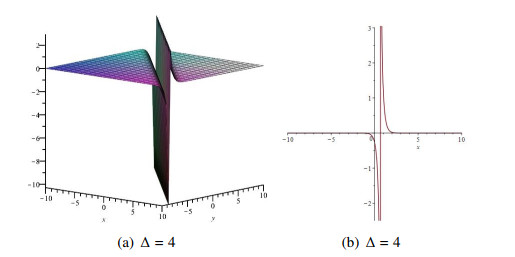


 DownLoad:
DownLoad: